Tips for getting rid of crabgrass in Fairfield County, CT
Do you have crabgrass on your lawn? If you’re like most homeowners in Connecticut, you probably want to eliminate it. In this article, I’m going to share how to get rid of crabgrass, as well as prevent it from regrowing next year, and then how to maintain a happy and healthy lawn so you can prevent its return.
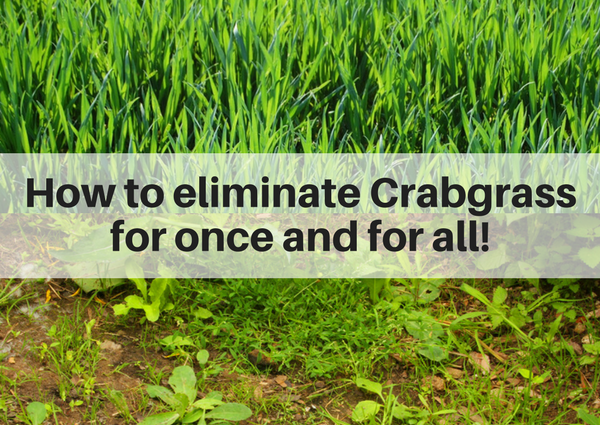
What is crabgrass?
 Crabgrass is an annual grassy weed from the genus Digitaria. These grassy weeds are tough, aggressive plants that thrive on stressed and poorly fertilized areas of your yard. The good news for your lawn is that these are annual plants, meaning that they die when frost and cold weather emerges. This makes it easier to kill them and get rid of crabgrass for once and for all.
Crabgrass is an annual grassy weed from the genus Digitaria. These grassy weeds are tough, aggressive plants that thrive on stressed and poorly fertilized areas of your yard. The good news for your lawn is that these are annual plants, meaning that they die when frost and cold weather emerges. This makes it easier to kill them and get rid of crabgrass for once and for all.
This contrasts with regular grass which lives many years and just becomes dormant over the winter months. When the spring comes, regular grass regrows.
One of the big challenges with crabgrass is that each plant is capable of producing 150,000 seeds per season. Because of this, you need to prevent the seeds from germinating the following year, so preventing crabgrass growth becomes a 2 to 3 year process. But, after that, if you maintain a healthy lawn, you should be able to prevent crabgrass from returning.
What causes crabgrass to grow?
 Crabgrass is attracted to bare soil areas, sunlight and water. It generally grows where your grass and lawn are weaker and also along the sides of driveway, road and walkways (which tend to get fertilized less).
Crabgrass is attracted to bare soil areas, sunlight and water. It generally grows where your grass and lawn are weaker and also along the sides of driveway, road and walkways (which tend to get fertilized less).
To be clear, crabgrass is NOT the cause of poor lawn health; rather, it is a symptom of poor lawn health. And, if you don’t treat it, it will return (and often spread) each year.
As you’ll see, your best defense against crabgrass is a strong offense (i.e. grow a well maintained and lush lawn…and keep it that way each year).
Here are the reasons you can develop crabgrass:
1. Bare spots

Weeds in a garden path
This happens most often around the edges of the lawn, but it can also happen in patches that get worn down. Solution; Seed any damaged areas in the fall and early spring.
2. Salty Soil
Crabgrass loves salt. If you live in an area where they salt the roads over the winter, you are more susceptible to crabgrass around the edges of the road. Solutions: Liquid aeration in the spring and fall will help reduce the salinity of the soil.<b/ig>
3. Mowing the lawn too short
You want your grass to be around 3.5-4″ tall. When the grass is too short, it allows more sunlight to hit the soil, which in turn allows crabgrass to flourish. If you prefer really short grass, you may want to consider seeding with green clover which shades the soil and provides a canopy, even when the grass is short.
Related article: What is the proper mowing height for your lawn?
You want to mow frequently to keep the grass a consistent height and do not mow than 1/3 of the grass blade at any time. Crabgrass needs plenty of light to germinate, so you want to keep the grass as long and thick as possible. This way, you’ll have shade at the soil surface. If you cut too close, you get patches of sun hitting the ground, and this makes it easy for crabgrass to grow.
4. Watering too frequently
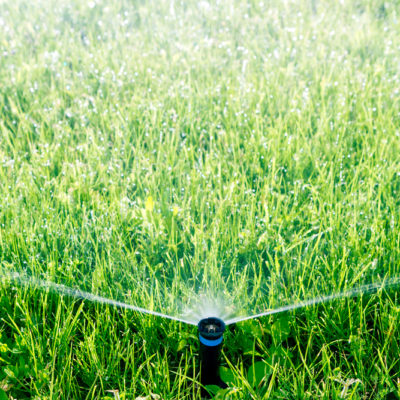 Many homeowners water their lawn too often. You generally want to water no more than twice a week (see: 9 most common lawn watering mistakes homeowners make). And, if it rains, count that as one of the times for the week.
Many homeowners water their lawn too often. You generally want to water no more than twice a week (see: 9 most common lawn watering mistakes homeowners make). And, if it rains, count that as one of the times for the week.
Also, by the way, a rainy spring leads to more crabgrass germination, and a hot summer leads to more crabgrass growth (especially if parts of your grass dry out).
Related articles:
What’s the life cycle for crabgrass?
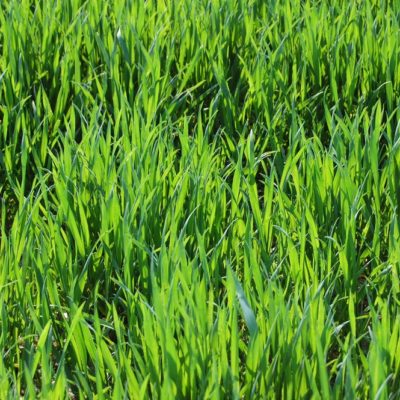 When treating crabgrass, it’s important to understand the life cycle. This will enable you to eliminate crabgrass and preventing it from returning. It is a multi-phase process.
When treating crabgrass, it’s important to understand the life cycle. This will enable you to eliminate crabgrass and preventing it from returning. It is a multi-phase process.
When soil temperatures reach 55-60 degrees Fahrenheit, the seeds begin to germinate (this is the proper time to use pre-emergent herbicide if you’ve had crabgrass the previous year).
Crabgrass grows and spreads quickly during the late spring and warm summer months and usually continues into the early fall. And, during this time, each plant produces thousands of seeds.
While the first frost kills the crabgrass plants, it’s important to understand that the seeds remain dormant during the winter, and then as the soil warms up in the spring, the seeds will germinate and then reappear…unless you take action (see below).
How to prevent crabgrass before it starts to grow
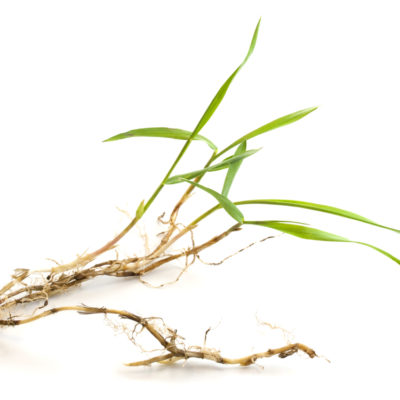
With some elbow grease and preventative actions, you can prevent crabgrass from growing on your lawn.
The real key to preventing crabgrass growth is to prevent the seeds from germinating. As I mentioned before, the best defense is a good offense. Make sure you have a healthy lawn. When this happens, crabgrass and other weeds simply can’t make the necessary toehold to invade your lawn.
Take proper care of your lawn (proper mowing height, proper watering) and be sure to fertilize your lawn at least once per year (but 4 times is MUCH better).
If you had crabgrass the previous year, you likely have seeds in the ground, and then your next line of defense is to prevent the seeds from germinating. (And, if you do this correctly, you will stop the life cycle and should be in great shape the following year.)
Timing is the key here. You want to apply the pre-emergent herbicide (sometimes called “crabgrass preventer”) before the germination occurs, but not too far ahead. Generally, the timing occurs between the time that forsythia bushes stop blooming and before the time the lilac bushes begin to bloom.
The biggest error here is the timing, and missing that critical window (as it varies from year to year). For this reason, it’s ideal to call your local lawn specialist. Not only do they have the right materials and methods, but they also know the critical time window (which varies each year).
Note: If you live in Fairfield County CT or nearby in Westchester County NY, call us and we are happy to do this work for you at the proper time and with proper herbicide and process…just call us at 203-424-1164.
Applying pre-emergent herbicide in the spring
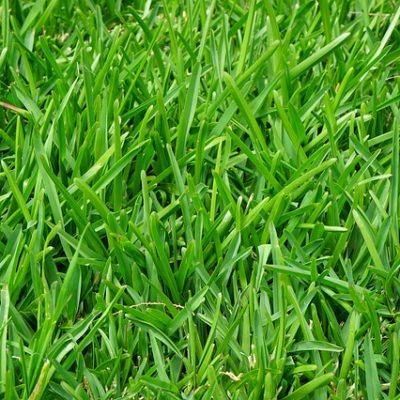 As I mentioned above, timing is key. If you do this too late, the crabgrass seeds will sprout (and then you’ll need to wait and apply post-emergent herbicide…and then waiting until the following spring to reapply pre-emergent herbicide again.
As I mentioned above, timing is key. If you do this too late, the crabgrass seeds will sprout (and then you’ll need to wait and apply post-emergent herbicide…and then waiting until the following spring to reapply pre-emergent herbicide again.
The timing varies year to year based on weather – both temperature and rain fail. Again, if hire a professional, they will know the ideal timing.
General directions for post-emergent herbicide (And, always follow the manufacturer instructions and precautions):
- Wait until the ground temperature is 60 degrees. You want to apply on a sunny day (and check the weather for tomorrow to make sure it won’t be raining). That can wash the formula away.
- Apply the herbicide uniformly across your lawn. If you miss a spot, crabgrass can grow there and then spread to the rest of your lawn. (Yes, it’s kind of like poison ivy).
- Do not de-thatch or aerate the lawn after applying the herbicide. The herbicide acts as a sealer. So if you dethatch it or aerate, you’ll break the chemical barrier and it will be ineffective.
- Wait 2 to 4 months before reseeding.
- Do NOT use pre-emergent herbicide if crabgrass has already started to grow as it’s too late and won’t work (see below for solutions after crabgrass has already started to grow). Also avoid using pre-emergent herbicide if you just installed new sod.
How to get rid of crabgrass once it’s grown
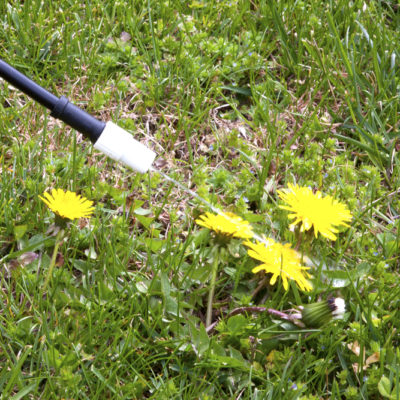 As the name implies, pre-emergent herbicide won’t work if the crabgrass has already started. Pre-emergent is only good for before the crabgrass grows as it prevents the seeds from germinating. Instead, if you already have crabgrass growing, you should use post-emergent herbicide products to control its growth.
As the name implies, pre-emergent herbicide won’t work if the crabgrass has already started. Pre-emergent is only good for before the crabgrass grows as it prevents the seeds from germinating. Instead, if you already have crabgrass growing, you should use post-emergent herbicide products to control its growth.
Post-emergent herbicide works by killing the crabgrass that has already grown. The amount of herbicide you can safely apply to your lawn will depend on type of grass you have (speak with your lawn expert
General directions for post-emergent herbicide (And, always follow the manufacturer instructions and precautions):
- Check the weather forecast before you apply. You want to apply it on a warm sunny day, and you don’t want it to rain later that day or the next day. If it rains, it will wash the product away before the crabgrass can absorb the herbicide. The herbicides work best when the temperatures are higher (60 to 90 degrees Fahrenheit). If it’s too cloudy or too cool, the product will be less effective.
- Make sure the soil is most before applying as this will also help absorption. If not, you should water the lawn and then wait until the next day to apply (assuming it’s sunny and no rain in the forecast).
- For best results, apply in the morning after the dew has dried.
Note: If you notice the lawn browning suddenly, you probably applied too much herbicide. Also, please note that if crabgrass is well established, you may need to apply herbicide twice. If so, wait 4 to 7 days before reapplication. (And, again make sure the soil is moist and the weather is sunny and that no rain is expected the following day).
Alternative and smarter solution if you already have crabgrass
 Alternatively, a smarter and healthier solution to this (if you can be patient) is to simply wait and live with the crabgrass until the fall. There are a few reasons for this. First, if you have crabgrass on the majority of your lawn, when you kill it, you will have bare spots.
Alternatively, a smarter and healthier solution to this (if you can be patient) is to simply wait and live with the crabgrass until the fall. There are a few reasons for this. First, if you have crabgrass on the majority of your lawn, when you kill it, you will have bare spots.
Not only will this make your lawn unappealing, but you also have to wait before you reseed the area (due to the herbicide that’s been applied). And, while you’re waiting, the bare areas may attract other weeds, regardless of whether your reseed or don’t. You’ve inadvertently created a fertile area for crabgrass and other weeds. And, this will make it harder for your new grass to grow.
Second, if you can just wait until the fall, the crabgrass will naturally die on it own when it gets cooler. And, then there is no need for herbicide. Then, you can reseed the grass in the fall so it can start to grow. At that point of the year, grass will grow, but crabgrass won’t.
Then in the spring, you will do pre-emergent herbicide to prevent the dormant seeds from generating.
We prefer this method because it’s more natural and generally more effective and efficient for your lawn.
Getting on a full crabgrass prevention treatment program
If you’re on our program, you are gradually building your lawn’s resistance to crabgrass. If you already have crabgrass, we can help you eliminate it and then prevent it from returning.
If you live in Fairfield County CT or nearby in Westchester County NY, call us and we are happy to do this work for you at the proper time and with proper herbicide and process…just call us at 203-424-1164.
Related lawn care articles:
- 9 most common lawn watering mistakes homeowners make
- How to properly water your lawn
- What is the proper mowing height for your lawn?
- How to prevent ticks in your yard


Mason Smith says
It’s really interesting to learn that the crabgrass really thrives in areas that are poorly watered. My parents are trying to get a really nice lush lawn this year. They need the help of some professionals if they want to get a great looking yard without working so hard.